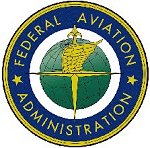Sun, Sep 03, 2006
Proposed Rule Follows Midway Runway Overrun
 Discussion of runway
length has been very much in the public eye this week, but after
last December's overrun accident of a Southwest 737 off a
snow-filled runway, the FAA immediately went to work analyzing
runway length decisions.
Discussion of runway
length has been very much in the public eye this week, but after
last December's overrun accident of a Southwest 737 off a
snow-filled runway, the FAA immediately went to work analyzing
runway length decisions.
The National Air Transportation Association (NATA) reports the
FAA conducted an internal audit into its own rules and regulations
and discovered about half of all air carriers did not have formal
procedures for determining safe runway length under less than ideal
conditions. Those operators who did make allowances for poor runway
conditions frequently had wildly varying rules.
The FAA cites as one example, the credit for the use of thrust
reversers in the landing performance data was not uniformly applied
and pilots may not have been aware of those differences.
Based on its findings, the FAA intended to immediately require
all part 91(K), 121, 125, and 135 turbojet operators to have
procedures in place to ensure a full-stop landing with at least a
15% safety margin beyond the actual calculated landing distance. On
Friday, however, the FAA agreed to hold off mandatory compliance
with the proposed rule.
 Sources at the NATA
tell ANN the organization welcomed Friday's issuance of a Safety
Alert for Operators (SAFO) titled “Landing Distance
Assessment at Time of Arrival for Turbojets.”
Sources at the NATA
tell ANN the organization welcomed Friday's issuance of a Safety
Alert for Operators (SAFO) titled “Landing Distance
Assessment at Time of Arrival for Turbojets.”
A SAFO is considered highly recommended, but not strictly
mandatory as would be an FAA regulation.
NATA states it convinced the FAA that their proposed rule was
regulatory in nature and thus required to follow formal rulemaking
processes which require a specific period of public comment and the
issuing of a Notice of Proposed Rulemaking (NPRM).
“The association is very pleased with the FAA’s
decision to issue this recommendation through a SAFO and not
through inappropriate regulation by notice or OpSpec [operational
specification]” said NATA President James K. Coyne. “No
federal agency is above the rulemaking process and the requirements
of the Administrative Procedures Act.”
More News
Aero Linx: Model Aeronautical Association of Australia MAAA clubs are about fun flying, camaraderie and community. For over 75 years, the MAAA has been Australia’s largest fl>[...]
Touchdown Zone Lighting Two rows of transverse light bars located symmetrically about the runway centerline normally at 100 foot intervals. The basic system extends 3,000 feet alon>[...]
“Discovery and innovation are central to our mission at Virgin Galactic. We’re excited to build on our successful record of facilitating scientific experiments in subor>[...]
How To Get A Story On Aero-TV News/Feature Programming How do I submit a story idea or lead to Aero-TV? If you would like to submit a story idea or lead, please contact Jim Campbel>[...]
Student Pilot Reported That During Rotation, “All Of A Sudden The Back Of The Plane Kicked To The Right..." Analysis: The student pilot reported that during rotation, “>[...]
 ANN's Daily Aero-Linx (05.02.24)
ANN's Daily Aero-Linx (05.02.24) ANN's Daily Aero-Term (05.02.24): Touchdown Zone Lighting
ANN's Daily Aero-Term (05.02.24): Touchdown Zone Lighting Aero-News: Quote of the Day (05.02.24)
Aero-News: Quote of the Day (05.02.24) ANN FAQ: Contributing To Aero-TV
ANN FAQ: Contributing To Aero-TV NTSB Final Report: Cirrus Design Corp SR20
NTSB Final Report: Cirrus Design Corp SR20




